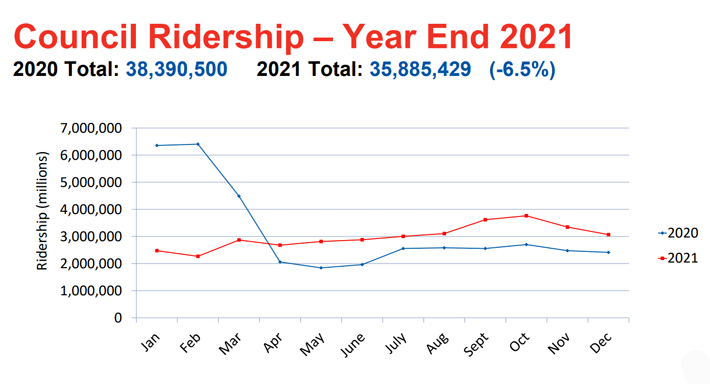2021 Regional Transit Ridership
Regional transit ridership begins to recover
COVID-19 restrictions over the course of 2021 continued to drive regional transit ridership numbers. Overall, ridership was down compared to pre-COVID levels; however, numbers improved about 34% between April and December compared to the same time period in 2020.
End-of-year overview
Transit ridership in the Twin Cities dropped to about 38.1 million in 2021, down about 7% from the previous year. It’s important to note that in the first three months of 2020, transit was operating without pandemic restrictions before ridership declined sharply by about 70% when Governor Tim Walz first issued stay-at-home orders.

In the first year of the pandemic between April and December of 2020, regional transit services averaged about two million customers per month. Despite facing similar restrictions throughout 2021, transit services averaged almost three million monthly customers, and reached nearly four million passengers in October.